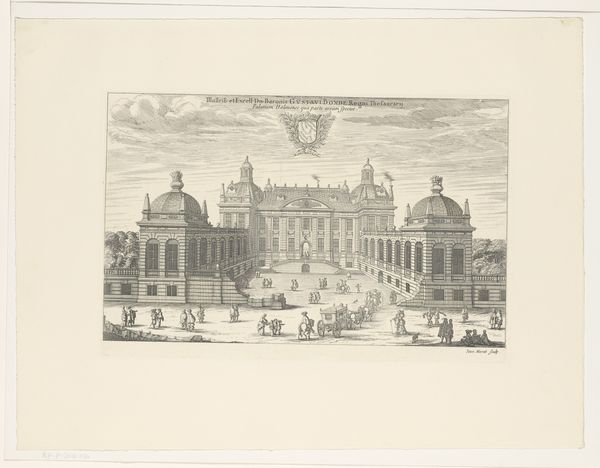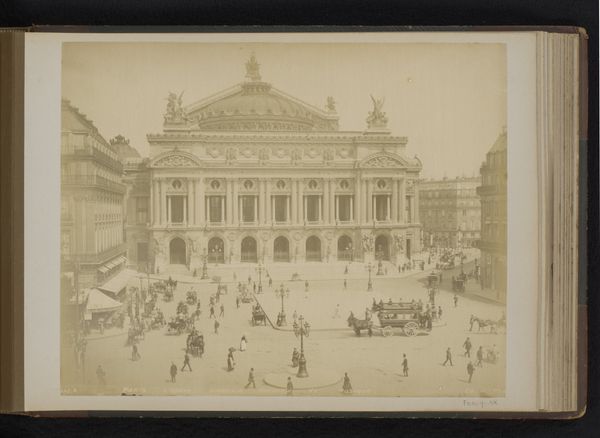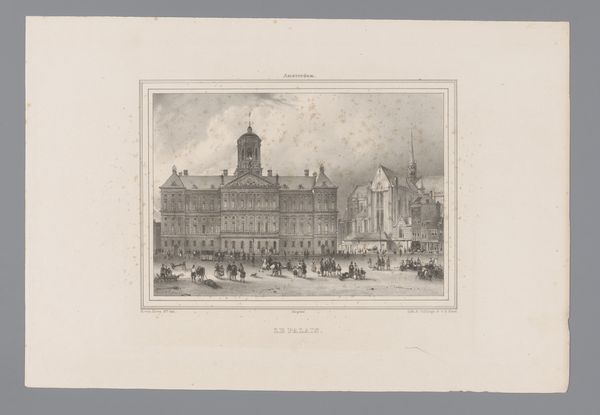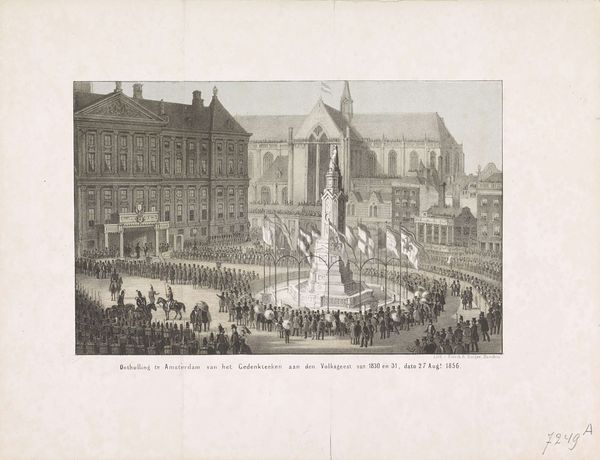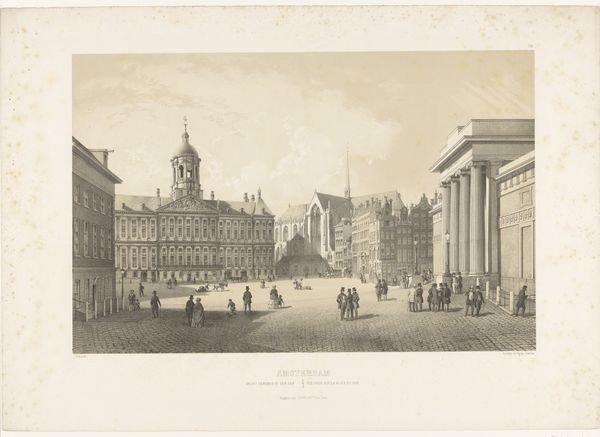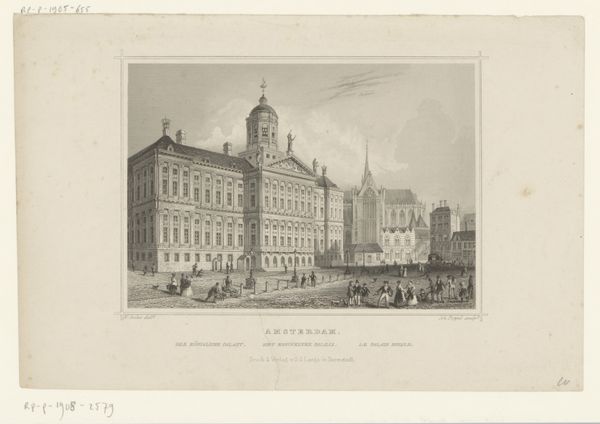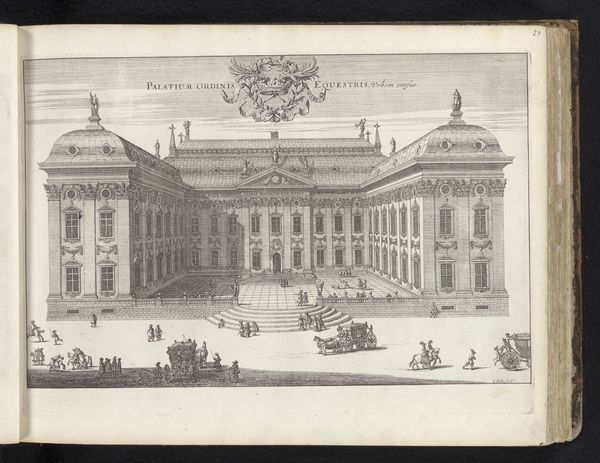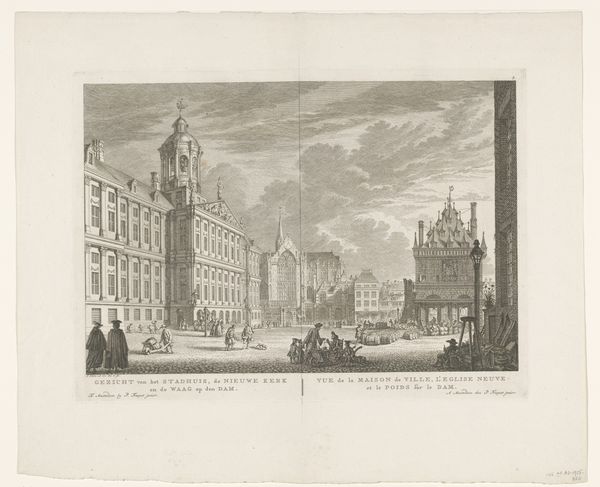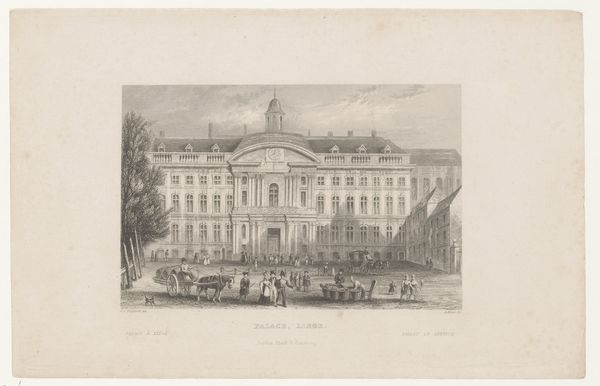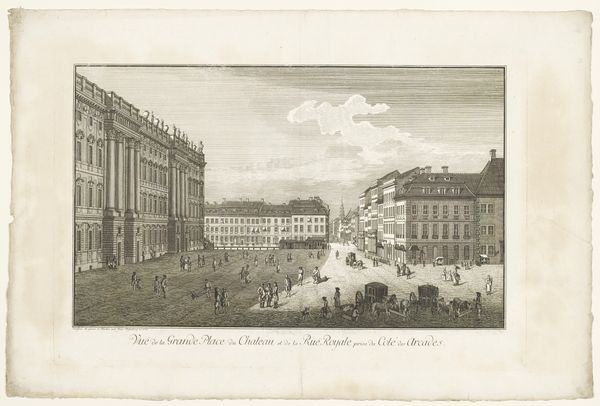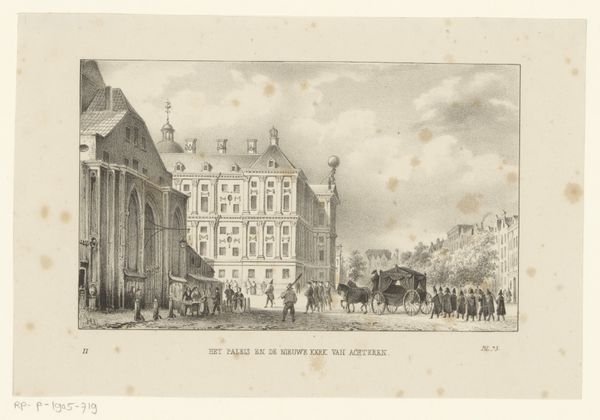
print, engraving, architecture
#
16_19th-century
# print
#
cityscape
#
engraving
#
architecture
#
realism
Dimensions: height 400 mm, width 560 mm
Copyright: Rijks Museum: Open Domain
Auguste Trichon created this print of the Opéra Garnier, capturing a view of Parisian society during a transformative period. Consider the social dynamics implied in the architecture and the figures populating the scene. The Opéra was conceived during the Second Empire under Napoleon III, meant to be a grand symbol of Parisian, and by extension French, cultural and political power. The building itself is a statement of imperial ambition and bourgeois values. Notice how the figures in the foreground are predominantly men, likely members of the upper classes, suggesting who had access to these spaces of cultural prestige. What narratives are excluded from this image of Parisian life? How does Trichon’s composition reinforce or question the hierarchies of his time? Reflect on how spaces like the Opéra can be both stages for artistic expression and reflections of social inequality.
Comments
No comments
Be the first to comment and join the conversation on the ultimate creative platform.
